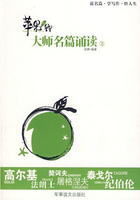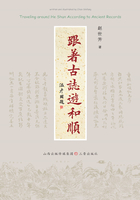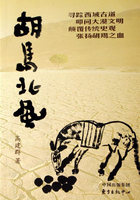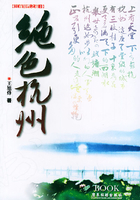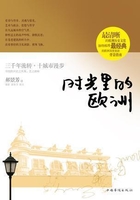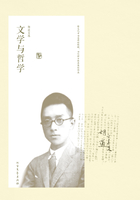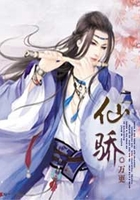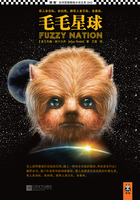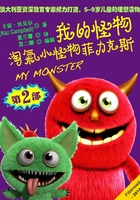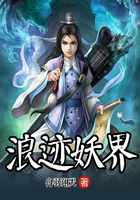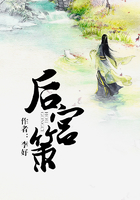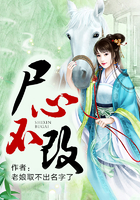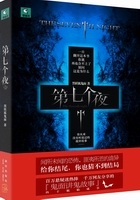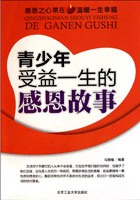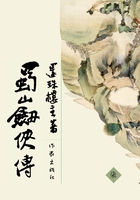汉字是记录汉语的文字,它对发展中华民族的优秀文化起了重大作用。本篇介绍的内容是汉字的起源、汉字的演变、中国书法以及汉字的改革。
1.学习汉字难吗?
Is it difficult to learn Chinese characters?
Chinese characters are not an alphabet as Western languages used. Each character represents a separate word, and Chinese characters indicate both the meaning and the sound for a whole word. The writing system is not a conve-nient device lying ready at hand for overseas learners to pick up and use. In English, there are 26 alphabetic symbols. English native speakers can make tens of thousands of words with comparative ease. In Chinese, each character must be laboriously memorized. Language learners often wonder how many characters they need to learn in order to have a reading knowledge of Chinese materials other than classic literature. Various estimates have been given, ranging from 3,000 to 5,000.
Statistics show that the majority of the 50,000~60,000 existing characters are not in common use.
Notes:1)alphabet字母表;2)indicate指出;3)symbol象征;4)comparative比较的;5)laboriously费力地;6)estimate估计;7)statistics统计
2.汉字的起源有哪些传说?
Is there any legend about the origin of Chinese characters?
Chinese script has at least a history of four thousand years. We are not certain of the date of its invention. There have been various stories about the origin of the Chinese characters. In remote antiquity, ancient people made records by tying knots with a rope. Another story says that there was an ancient legendary figure whose name was Cangjie (仓颉). He worked as Emperor Huangdi’s historiographer. It was said that Cangjie had four eyes, and he was good at observation. He often watched the footprints of birds and beasts as well as the appearance of stars. His long-term observation inspired him to create the earliest written characters.
Notes:1)script书写体;2)antiquity古代的;3)historiographer历史家;4)observation观察
3.汉字起源于图画吗?
Did Chinese characters come from drawings?
These legendary stories cannot be accepted as the truth. However, in ancient China, characters began as simple drawings of natural objects—trees, water, mountains, horses, and humans. The earliest characters are thus“pictographic”in quality. In Banpo Village (半坡) in Xi’an and other places, archeologists discovered symbols engraved on the unearthed potteries which date to the period of the Yangshao Culture (仰韶文化), a matriarchal culture of the early Neolithic Age. More than 4,000 years ago, ancient people in the present Tai’an (泰安) area of Shandong Province engraved symbols on pottery which belong to a late period of the Dawenkou Culture (大汶口文化). Experts believe that these pictographic symbols may be the earliest forms of Chinese written characters.
At present, philologists think that symbols engraved on the Yangshao pottery are not a written language. However, the symbols engraved on the Dawenkou pottery unearthed in the Tai’an area may be the earliest forms of Chinese written characters. In this view, Chinese characters have existed for more than 4,500 years.
Notes:1)pictographic绘画文字的;2)archeologist考古学家;3)matriarchal母系氏族的;4)Neolithic新石器时代的;5)pottery陶器;6)philologist语言学者
4.甲骨文是怎样发现的?
How were ancient inscriptions on bones or tortoise shells discovered?
The ancient inscriptions on bones or tortoise shells were characters used for divination practice during the Shang and Zhou dynasties (商周时代). Up to the present time, 4,600 characters have been discovered on unearthed bones or tortoise shells. Toward the end of the Qing Dynasty, peasants in Xiaotun (小屯) in Anyang County (安阳县), Henan Province kept finding fragments of the bones and shells of ancient animals as they ploughed their fields. They thought that they were“dragon bones”which could be used for medical treatment. Therefore, more and more peasants went into the fields and they turned up the soil, hoping that they could pick up more bones of this kind and sell them to medicinal herb stores.
Several decades later, in 1899, a man by the name of Wang Yirong (王懿荣) was sick and was about to take some Chinese herb medicine from a herb store. Wang saw some bone fragments and discerned some inscribed figures which looked very much like ancient writing. Wang was the president of a college in Beijing under the Qing government. Being well-learned scholar, Wang knew that these fragments were not“dragon bones.”He went back to the store and purchased some more bones for his study. At the same time, he was informed that these bones were all from Henan. Through his careful study, Wang came to realize that the symbols engraved on the bones were script used before the Qin Dynasty. At a considerable price, he bought the whole lot of bones and shells that bore inscribed figures and designs. He named these symbols“Tortoise Shell Characters (龟版文字).”This important discovery opened up the way to the study of the Shang and Zhou dynasties in the fields of socio-politics, economics and culture.
Notes:1)inscription铭文;2)divination占卜;3)fragment碎片;4)discern分辨;5)socio-politics社会政治
5.什么是“六书”?
What are the Six Categories of Chinese Characters?
In ancient times, Chinese characters fell into the Six Categories. The first four categories include“pictographs (象形),”“self-explanatory characters (指事),”“complex ideograms (会意)”and“semantic-phonetic characters (形声).”The first four categories indicate the methods of forming the characters. The final two are“associative transformations (转注)”and“phonetic loan characters (假借).”These two categories refer to the usage of characters.
Notes:1)pictograph象形文字;2)explanatory解释的;3)ideo-gram表意文字;4)semantic语义的;5)phonetic语音的;6)as-sociative组合的;7)transformation转变;8)loan借出
6.为什么要了解汉字?
Why do we need to understand Chinese characters?
The Chinese language is an institution, rather than a tool, of society. With their unusual script, Chinese characters developed a unique culture. The acquaintance with Chinese characters will bring interest, pleasure and a lifelong reward. Learning the characters will help you open up a door through which you are able to appreciate the most enduring cultural achievements of China.
Notes:1)institution制度;2)unique独一无二的;3)unusual独特的;4)acquaintance了解;5)appreciate欣赏;6)enduring持久的
7.你对方言了解多少?

